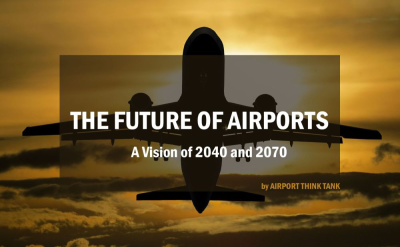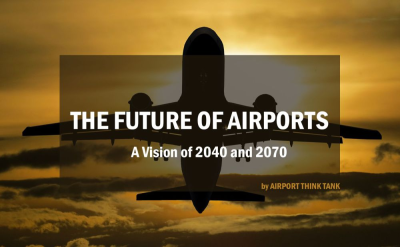
The Future of Airports: Communities and Mobility (Topic No. 9)
The Airport Think Tank of ENAC Alumni published last month the global analysis of The Future of Airports. Each week, discover a new focus on one of the 11 topics of this research initiative.
Airports do not have “surrounding” or “neighboring” communities. They are part of and a member of these communities. Airport communities can take different forms and meaning even at a single airport, depending on the matter. For the purpose of this discussion, we defined the concepts of inner and outer communities. The inner community, in the direct vicinity of the airport, is exposed to specific, direct economic benefits but also negative externalities (higher noise exposure). The inner community includes cities where the airport is sitting on, and adjacent ones turned toward the airport because they depend on it economically or are directly exposed to its externalities. A key attention from the airport should be seeking a peaceful and mutually beneficial coexistence with its “neighbors”. This could be achieved by helping them insulate homes and workplaces against noise when relevant and developing an adequate land use plan for allowing a fair and balanced development. The outer community is served by the airport and may encompass its primary catchment area to include the macro-region. The outer community encompasses a large diversity of parties benefiting from or concerned by the airport. This includes local passengers flying their community airport, business and economic development community looking for a dynamic airport supporting them with more direct flights, local governments, and various agencies involved with the wide range of airport-related challenges and opportunities, etc. Its footprint could include the metropolitan area and a broader region, depending on the aspects considered. Large hub airports are gateways for entire regions and countries. Airports in remote and scarcely populated areas enable opportunities for vast territories.
The inner community of the future should be connected to and supported by its airport. Adverse impacts and in particular noise must be better taken into considerations in countries where land-use policies and insulation programs are not yet in place or enforced. But community issues go beyond the noise and pollution aspects that are developed further in Topic No. 10. Accessibility around an airport can be paradoxically an issue when all ground transportation is directed toward the airport and designed for draining passengers to other centers of residence, consumption, and decision. Airports increasingly promote a recruitment in their inner communities for fostering the integration of their population, reducing unemployment and providing opportunities for social mobility, and growing an airport-centric community. In return, a dynamic inner community can develop a whole ecosystem of small businesses that can ultimately be connected to airport-based activities and an airport trade center that will be served by various local services. However, several airports around the world have residential areas in their immediate vicinity. They are often inhabited by lower income households – and voiceless communities in some parts of the world. Sometimes, these communities relocate around airports pushed away from their original settlements because of uncontrolled gentrification without the social justice component. Climate gentrification is an emerging issue that might make this phenomenon more severe. At the same time, the same lands around airports might become the target of industrial or business real-estate developers. This calls for a special attention to social justice in planning and development.
One of the main challenges of the 2040 and 2070 horizons for airports serving large outer communities will be mobility. Virtually all major metropolitan areas are facing some kind of acute congestion symptoms. Moscow, Istanbul, Bogota, Mexico City, São Paulo, London, Rio de Janeiro, Boston, Los Angeles, Roma are among the worst cities in the world for the average accrued number of hours spent sitting in traffic annually. Accessibility has a direct impact on the attractiveness of airports as both transportation mode and workplace. We are at the edge of a revolution in urban mobility, and airports shall embrace it in order to increase their attractiveness and their connectivity to their communities. Mass transit is being implemented in new cities, including countries that have been historically reluctant to fund public transportation systems. Maybe closer to us than it might appear, automated and connected vehicles (AV/CV) will unlock new perspectives with widely available and accessible low-cost ridesharing that could even replace individual car ownership at some point. However, as AV/CV could optimize the utilization of roads through network coordination using artificial intelligence, they will not provide a relief to existing congestion as they share the ground-level resource available with existing modes and vehicles. AV/CV will replace or add vehicles to the existing traffic. If they are highly affordable, the AV/CV-based TNC offer might even seduce current users of mass transit, take revenues out of public transportation, and worsen congestion issues. We have to rethink mobility and think out of the box to develop new capacities that are complementary to existing modes. In large cities that already have such systems but are still facing acute congestion issues, innovative modes are emerging. With the resource being scarce at ground level, they explore options underground and in the air. Urban Air Mobility (UAM) is promising as well for providing point to point connections from the airport. In large metropolitan areas, the future is most likely a combination of existing and new urban mobility solutions – like it is often already the case – to address the demand.
















No comment
Log in to post comment. Log in.